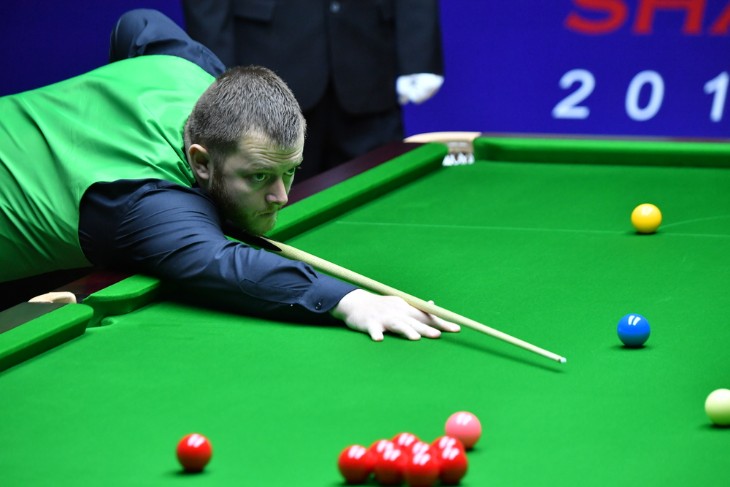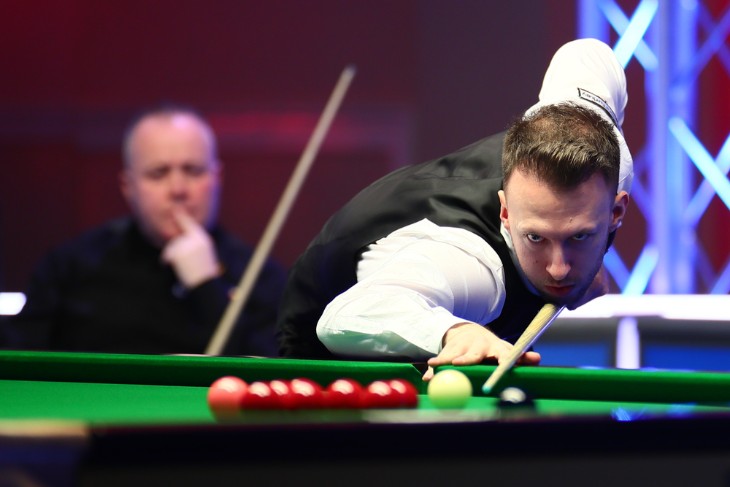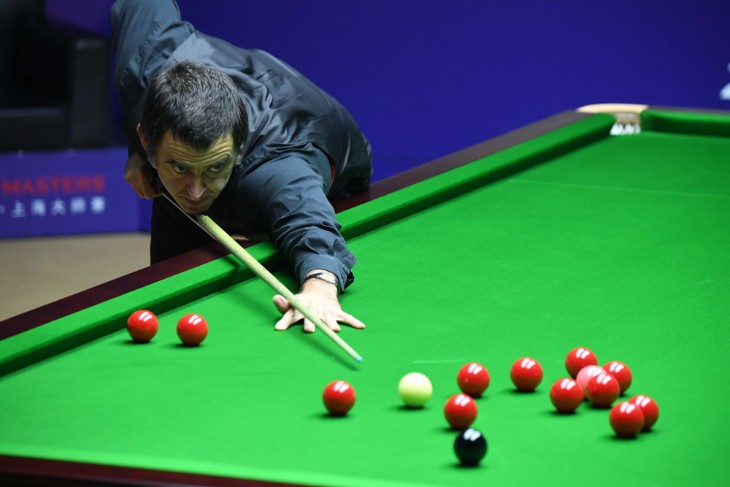- The Essence of Safety Play in Snooker: More Than Just Defence
- Why Safety Play Outcome is a Game-Changer in Snooker
- The Art of Predicting Safety Play Outcome: A Betters' Perspective
- Key Factors Influencing Safety Play Outcome in Snooker
- The Psychological Aspect of Safety Play: More Than Just Tactics
- Leveraging Technology to Analyse Safety Play Outcomes
- Embracing the Challenge of Predicting Safety Play Outcome
- Final Takeaway
One key element often overlooked but critical in shaping the game's dynamics is the 'Safety Play Outcome'. This tactical manoeuvre, though less flashy than a long pot or a century break, can decisively tilt a match in a player's favour. Understanding the nuances of safety play, a strategic bet in snooker, can significantly enhance the appreciation of the game and influence betting decisions.
The Essence of Safety Play in Snooker: More Than Just Defence
Safety play in snooker is much more than just a defensive move. It's a clever strategy that can change the whole game. When a player makes a safety shot, they hit the cue ball to a place on the table where it's hard for their opponent to make a good shot. The idea is to make it tough for the opponent to score points, or even better, to make them make a mistake.
This part of snooker is like a game of chess. It's about thinking ahead and planning your moves. Good safety play shows that a player is not just skilled with the cue but also smart in their tactics. Players who are good at this can control the game. They make their opponents play shots they don't want to play. This can lead to mistakes, giving the player who made the safety shot a big advantage.
Safety play also tests a player's skill in reading the table. The player has to look at where all the balls are and decide the best place to leave the cue ball. This choice can be tricky. The player has to think about not just their next shot, but also what their opponent might do.
Safety play in snooker is a key strategy. It's not just about stopping the opponent from scoring. It's about taking control of the game and making smart choices. Players who master safety play often do well in snooker because they're not just playing the balls, they're playing the opponent too.
Why Safety Play Outcome is a Game-Changer in Snooker
- Shifts the Game's Momentum: A successful safety play can completely change the momentum of a snooker game. When a player pulls off a good safety play, it puts the opponent in a tough spot. This can shift the control of the game. If the opponent struggles to respond, it can give the player who made the safety play a big advantage. This change in momentum can be key, especially in close matches.
- Increases Psychological Pressure: Safety plays also add psychological pressure. Imagine being the player who has to respond to a tough safety play. It's not easy. You have to make a good shot, or you might give away points or even the frame. This pressure can lead to mistakes. Players who are good at safety plays use them to test their opponents' nerves and skill under pressure.
- Influences Game Strategy: The outcome of a safety play can affect the whole strategy of a game. If a player is good at safety plays, they might use them more to control the game. This can force their opponent to play more defensively. On the other hand, if a player struggles with safety plays, they might try to avoid them. This can change the way they play the whole game.
- Determines Scoring Opportunities: Finally, safety plays can create scoring opportunities. A good safety play can leave the opponent with no good shot. This might force them to make a risky shot or even make a mistake. If the player who made the safety play gets a chance to score after that, they can take control of the frame. This makes safety play a key part in a player's strategy to win points and frames.

The Art of Predicting Safety Play Outcome: A Betters' Perspective
Predicting the outcome of a safety play in snooker is a real skill for betters. It's not just about guessing; it's about understanding the game and the players. To do this well, you need to know how each player plays. Some players are good at safety play. They know just where to hit the cue ball to make it tough for their opponent. If you know a player is good at this, you can bet they might use safety play to their advantage.
You also need to think about the match situation. In tight games, players might use safety play more. They do this to avoid mistakes and put pressure on their opponent. So, if the game is close, expect more safety plays. This can help you predict what might happen next in the match.
Another thing to consider is how players react under pressure. Some players stay calm and make good safety plays even when the game is tense. Others might get nervous and not do as well. Knowing how players handle these moments can guide your betting. If a player is known for staying cool under pressure, they might be more likely to make a successful safety play.
Finally, look at the table layout. The position of the balls can make a big difference. If the balls are spread out, it might be harder to make a good safety play. But if they're close together, a player can use them to block their opponent's shots. Understanding the table layout can give you clues about what kind of safety play a player might try.
Predicting the outcome of safety plays in snooker involves a mix of knowing the players, understanding the game situation, and reading the table. If you can do this, you'll have a better chance of making good bets on snooker matches.
Key Factors Influencing Safety Play Outcome in Snooker
- Player's Skill and Experience: The skill and experience of the player are crucial in safety play outcomes. Skilled players can judge the angles and speed needed for an effective safety shot. They know how to hit the cue ball so it ends up in a tough spot for their opponent. Experience also matters. Players who have been in many tight situations know how to handle pressure. They're more likely to make a good safety play when it counts.
- Table Conditions: The condition of the snooker table affects safety plays. If the tablecloth is new and smooth, the cue ball moves faster and more predictably. This can make safety plays easier to control. On an older table, the ball might move slower or bounce unpredictably. This can make safety plays harder and affect the outcome.
- Position of the Balls: Where the balls are on the table is another big factor. If the balls are spread out, it's easier to find a spot for a good safety play. But if they're close together, it can be harder to make a play without leaving an opening for the opponent. Players have to look at the table and decide the best shot based on where the balls are.
- Mental State of the Player: Finally, the player's mental state is important. Snooker is not just physical; it's a mental game too. Players who are feeling confident and focused are more likely to make successful safety plays. If a player is feeling nervous or distracted, they might not play as well. So, how a player is feeling can affect their safety plays.
The Psychological Aspect of Safety Play: More Than Just Tactics
- Mental Warfare on the Table: Safety play in snooker is not just about the physical shot. It's also a form of mental warfare. When a player makes a good safety shot, it challenges the opponent mentally. The opponent has to figure out how to respond. This can create stress and pressure. If the opponent can't handle this pressure, they might make a mistake. So, a safety play is a way to test the opponent's mental strength as much as their skill.
- Building Player Confidence: For the player making the safety play, a successful shot can boost their confidence. When they see their plan working, it makes them feel in control. This boost in confidence can affect their whole game. They start to play better, take better shots, and make fewer mistakes. In snooker, feeling confident can make a big difference.
- Breaking Opponent's Rhythm: A good safety play can also break the opponent's rhythm. Snooker is a game of rhythm. Players get into a flow when they start potting balls. A tough safety play can stop this flow. It forces the opponent to shift from potting to playing defensively. This change can upset their rhythm and make it harder for them to get back into their flow.
- Forcing Mistakes Through Pressure: Lastly, safety plays are about creating pressure to force mistakes. When faced with a tough safety play, the opponent has to make a difficult shot. This pressure can lead to errors, giving the player who made the safety play a chance to score. It's a strategic way to get an advantage without needing to pot balls.

Leveraging Technology to Analyse Safety Play Outcomes
Using technology is a big help when it comes to understanding safety plays in snooker. Today, loads of tools and apps give you detailed info about players and matches. These can show you how often a player goes for safety plays and how successful they are. This data is really useful for bettors. It helps you see patterns and trends you might not notice just by watching.
One way technology helps is through video analysis. This lets you watch past matches and see exactly how players made their safety plays. You can see where they hit the cue ball and how it affected the game. This can give you a good idea of a player's style and skill in safety plays.
Stats are another big help. Many apps and websites give detailed stats on snooker players. These stats can include things like how often a player wins after making a safety play. They can also show how players perform in different situations, like in high-pressure matches. These numbers can guide your betting decisions.
Live updates are also important. Some apps give you real-time info during a match. This means you can see how players are doing right now, not just in past games. If a player is playing well and making good safety plays, you might want to bet on them.
Technology gives you a lot of useful info for betting on snooker. It lets you see how players use safety plays and how it affects their games. By using video analysis, stats, and live updates, you can make smarter bets based on solid info, not just guesses.
Embracing the Challenge of Predicting Safety Play Outcome
- Analyzing Player Tendencies: Predicting the outcome of a safety play starts with understanding each player's style. Some players are aggressive and take risks, while others play more cautiously. By watching past matches, you can get a sense of how a player is likely to handle safety situations. This knowledge helps in predicting whether they'll opt for a safety play and how effective it might be.
- Considering the Match Context: The context of the match also influences safety play decisions. In high-stakes or close games, players might rely more on safety plays. This is because the risk of losing points is higher. Knowing the importance of the match and the score can give you clues about the players' strategies, including their use of safety plays.
- Evaluating Table Layout: The layout of the balls on the table is crucial in predicting safe play outcomes. If the balls are positioned in a way that makes potting difficult, players are more likely to opt for safety plays. Good knowledge of the game helps you understand when a safety play is the best option and how it might turn out.
- Understanding Player's Mental State: Lastly, the player's mental state plays a big role in safety plays. Players who feel confident and focused are more likely to execute effective safety plays. On the other hand, players who seem stressed or under pressure might struggle. Keeping an eye on the players’ body language and recent performance can offer insights into their current mental state.
Final Takeaway
The safety play outcome in snooker is a crucial element that often determines the direction of a game. It's a subtle art that combines skill, strategy, and psychological warfare. Understanding this aspect of snooker can greatly enrich the experience of watching the game and participating in betting. As we continue to explore the depths of this fascinating sport, the strategic bet of safety play remains an integral part of its allure and excitement.




.webp)


 (1).webp)




















